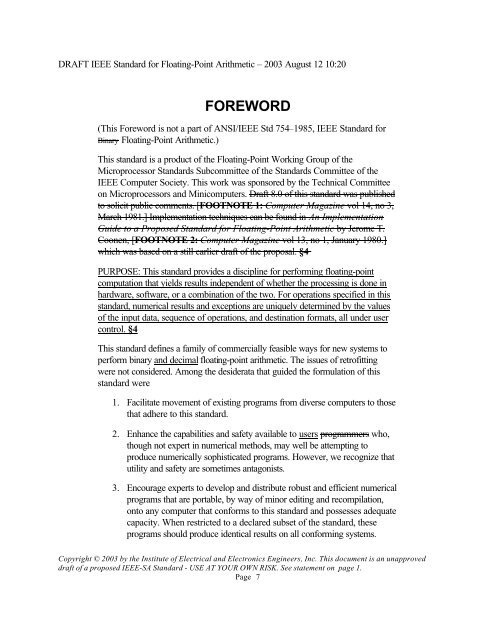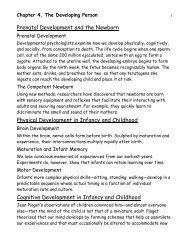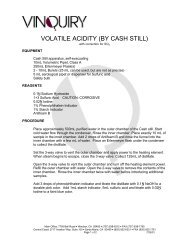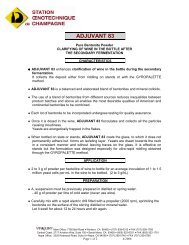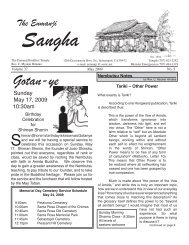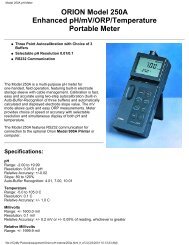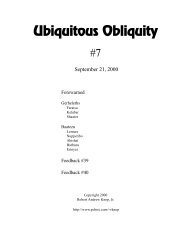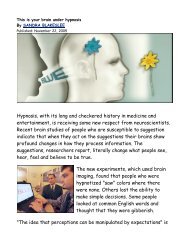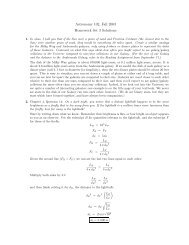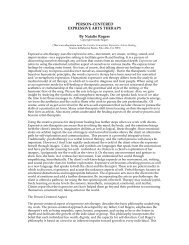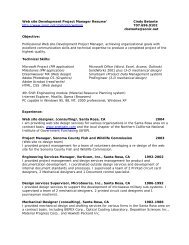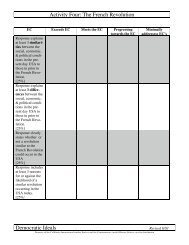DRAFT IEEE Standard for Binary Floating-Point Arithmetic - Sonic.net
DRAFT IEEE Standard for Binary Floating-Point Arithmetic - Sonic.net
DRAFT IEEE Standard for Binary Floating-Point Arithmetic - Sonic.net
Create successful ePaper yourself
Turn your PDF publications into a flip-book with our unique Google optimized e-Paper software.
<strong>DRAFT</strong> <strong>IEEE</strong> <strong>Standard</strong> <strong>for</strong> <strong>Floating</strong>-<strong>Point</strong> <strong>Arithmetic</strong> – 2003 August 12 10:20<br />
FOREWORD<br />
(This Foreword is not a part of ANSI/<strong>IEEE</strong> Std 754–1985, <strong>IEEE</strong> <strong>Standard</strong> <strong>for</strong><br />
<strong>Binary</strong> <strong>Floating</strong>-<strong>Point</strong> <strong>Arithmetic</strong>.)<br />
This standard is a product of the <strong>Floating</strong>-<strong>Point</strong> Working Group of the<br />
Microprocessor <strong>Standard</strong>s Subcommittee of the <strong>Standard</strong>s Committee of the<br />
<strong>IEEE</strong> Computer Society. This work was sponsored by the Technical Committee<br />
on Microprocessors and Minicomputers. Draft 8.0 of this standard was published<br />
to solicit public comments. [FOOTNOTE 1: Computer Magazine vol 14, no 3,<br />
March 1981.] Implementation techniques can be found in An Implementation<br />
Guide to a Proposed <strong>Standard</strong> <strong>for</strong> <strong>Floating</strong>-<strong>Point</strong> <strong>Arithmetic</strong> by Jerome T.<br />
Coonen, [FOOTNOTE 2: Computer Magazine vol 13, no 1, January 1980.]<br />
which was based on a still earlier draft of the proposal. §4<br />
PURPOSE: This standard provides a discipline <strong>for</strong> per<strong>for</strong>ming floating-point<br />
computation that yields results independent of whether the processing is done in<br />
hardware, software, or a combination of the two. For operations specified in this<br />
standard, numerical results and exceptions are uniquely determined by the values<br />
of the input data, sequence of operations, and destination <strong>for</strong>mats, all under user<br />
control. §4<br />
This standard defines a family of commercially feasible ways <strong>for</strong> new systems to<br />
per<strong>for</strong>m binary and decimal floating-point arithmetic. The issues of retrofitting<br />
were not considered. Among the desiderata that guided the <strong>for</strong>mulation of this<br />
standard were<br />
1. Facilitate movement of existing programs from diverse computers to those<br />
that adhere to this standard.<br />
2. Enhance the capabilities and safety available to users programmers who,<br />
though not expert in numerical methods, may well be attempting to<br />
produce numerically sophisticated programs. However, we recognize that<br />
utility and safety are sometimes antagonists.<br />
3. Encourage experts to develop and distribute robust and efficient numerical<br />
programs that are portable, by way of minor editing and recompilation,<br />
onto any computer that con<strong>for</strong>ms to this standard and possesses adequate<br />
capacity. When restricted to a declared subset of the standard, these<br />
programs should produce identical results on all con<strong>for</strong>ming systems.<br />
Copyright © 2003 by the Institute of Electrical and Electronics Engineers, Inc. This document is an unapproved<br />
draft of a proposed <strong>IEEE</strong>-SA <strong>Standard</strong> - USE AT YOUR OWN RISK. See statement on page 1.<br />
Page 7


